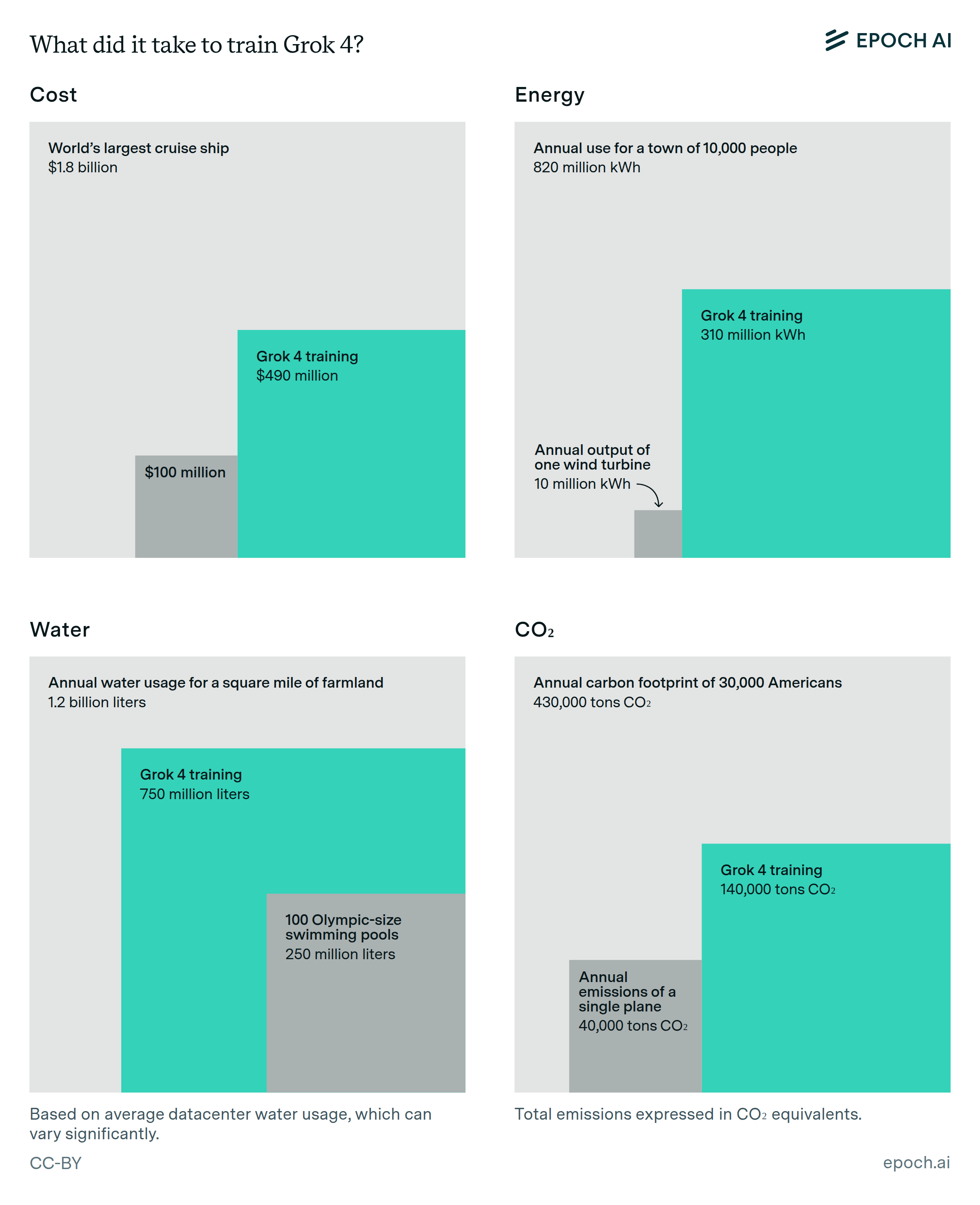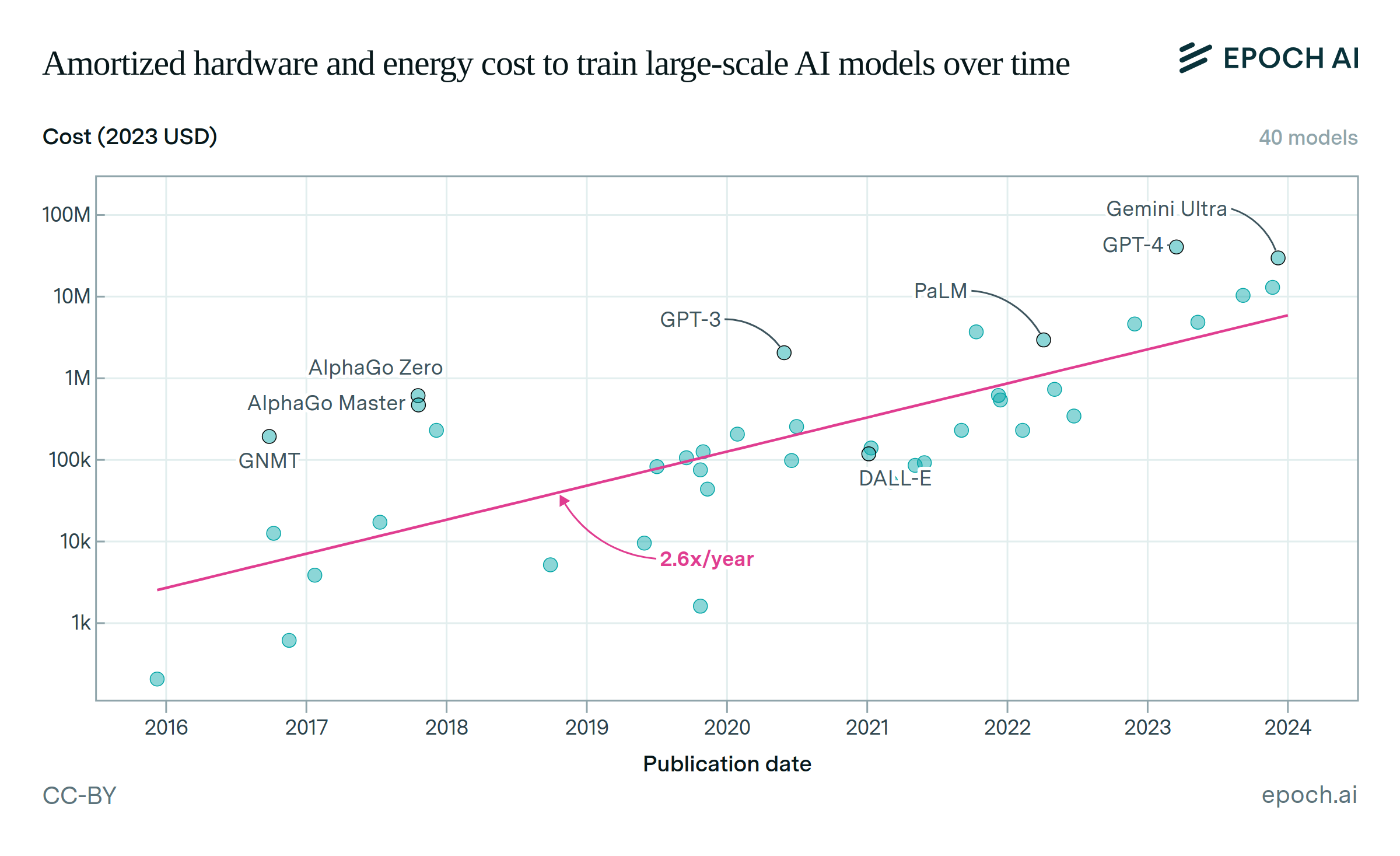Most of OpenAI’s 2024 compute went to experiments
OpenAI spent billions of dollars on compute in 2024, in the form of renting cloud compute from Microsoft. This reportedly included around $5 billion in research and development compute, including all training and research compute, and around $2 billion in inference compute.

Based on our compute and cost estimates for OpenAI’s released models from Q2 2024 through Q1 2025, the majority of OpenAI’s R&D compute in 2024 was likely allocated to research, experimental training runs, or training runs for unreleased models, rather than the final, primary training runs of released models like GPT-4.5, GPT-4o, and o3.
Authors
Published
October 10, 2025
Learn more
Overview
We estimate the breakdown of OpenAI’s cloud compute spending in 2024, based on reports breaking down OpenAI’s total compute expenses, as well as our estimates of the cloud compute cost to train the models OpenAI published or released from Q2 of 2024 through the end of Q1 2025. OpenAI did not own significant amounts of AI compute in 2024, so this spending represents all of OpenAI’s compute resources in 2024. For these released models, we estimate the cost of the final training run (i.e. the training run that produced the version OpenAI released), not including experimental runs (often called “derisking runs”) used to prepare for the final training run.
Analysis
OpenAI’s overall compute expenses
Data for OpenAI’s overall compute spending in 2024 come from Epoch’s AI Companies dataset, ultimately via reports in The Information and The New York Times. These reports indicate that OpenAI spent $3 billion on training compute, $1.8 billion on inference compute, and $1 billion on research compute amortized over “multiple years”. For the purpose of this visualization, we estimate that the amortization schedule for research compute was two years, for $2 billion in research compute expenses incurred in 2024. These are OpenAI’s cloud compute expenses in 2024, not the upfront capital cost of the data centers: OpenAI currently relies on cloud companies to access compute.
How exactly OpenAI distinguishes training and research compute is not known, so we group these expenses as $5 billion in total “R&D” (research and development) compute expenses.
Final training cost of released OpenAI models
For the training expenses of OpenAI models, we looked at OpenAI’s released or announced models from the end of Q1 2024 through the end of Q1 2025, as a rough heuristic to account for the delay between when a model was trained and its release/announcement date. Significant models from this time period include GPT-4.5, GPT-4o, o3 (December preview), and Sora Turbo.
We estimated the cost of the final training runs for these models, meaning the training runs that directly produced the released versions, as described below The code and full methodology can be found in this notebook.
GPT-4.5: We directly estimate GPT-4.5 cloud spending using estimates of GPT-4.5’s cluster size, duration, and price per GPU-hour, because we have more evidence about GPT-4.5 training cluster and duration than its training compute in terms of FLOP.
The training details we used were as follows:
| Low estimate (10th percentile) | High estimate (90th percentile) | Notes | |
|---|---|---|---|
| Cluster size, in Nvidia H100s | 40,000 | 100,000 | Microsoft’s Goodyear Arizona cluster, including Epoch’s analysis of satellite imagery (methodology forthcoming) and a third-party estimate. |
| Training run duration in days | 90 | 165 | Likely began in May, ended in September. |
| Cloud cost per H100-hour | $1.50 | $3 | Matches general industry trend of $2 per H100-hour |
Other models: We use a simpler approach of estimating their training compute in floating-point operations (FLOP), and then calculating cloud compute cost using standardized assumptions about GPU utilization and the cost of GPU-hours. We focus on confidence intervals of FLOP rather than point estimates in order to estimate the aggregate compute of OpenAI models. The confidence intervals we used are shown below:
| Model | Low estimate (10th percentile) | High estimate (90th percentile) |
|---|---|---|
| GPT-4o | 1e25 FLOP | 5e25 FLOP |
| GPT-4o mini | 1e24 FLOP | 1e25 FLOP |
| Sora Turbo | 1e24 FLOP | 1e26 FLOP |
| o-series (o1-preview, o1, o1-mini, o3-mini, o3-preview December) | 1% of base model compute, presumed to be GPT-4o and GPT-4o mini) | 30% of base model compute, presumed to be GPT-4o and GPT-4o mini) |
| Other models (primarily updates of GPT-4o, such as GPT-4o image gen, GPT-4o CUA, and SearchGPT) | 1% of GPT-4o’s base model compute | 100% of GPT-4o’s base model compute |
Assumptions and limitations
These figures come from documents shared to investors in September 2024 and shown to journalists. They should not be considered completely reliable; for one, they rely on projections for the final quarter of 2024. Other lines of evidence suggest that these overall spending figures are approximately correct. OpenAI made around $3.7 billion in revenue in 2024, and is widely reported to be substantially unprofitable, meaning it spent much more than $4 billion in 2024. This would be consistent with ~$6 billion in compute spending, if compute makes up the bulk of their overall costs, and $1.8 billion in inference compute spending implies a plausible 50% margin on inference.
Note that the $1.8 billion in inference expenses presumably do not include Microsoft spending on inference to run licensed OpenAI models for its own products. Microsoft owns the data centers that OpenAI used for training, research, and inference in 2024, but Microsoft also separately licenses OpenAI models to power Microsoft products such as Copilot and the Azure API. These inference costs are likely significant but may be smaller than OpenAI’s own inference costs, since OpenAI’s products reportedly produce more revenue than their Microsoft equivalents.





